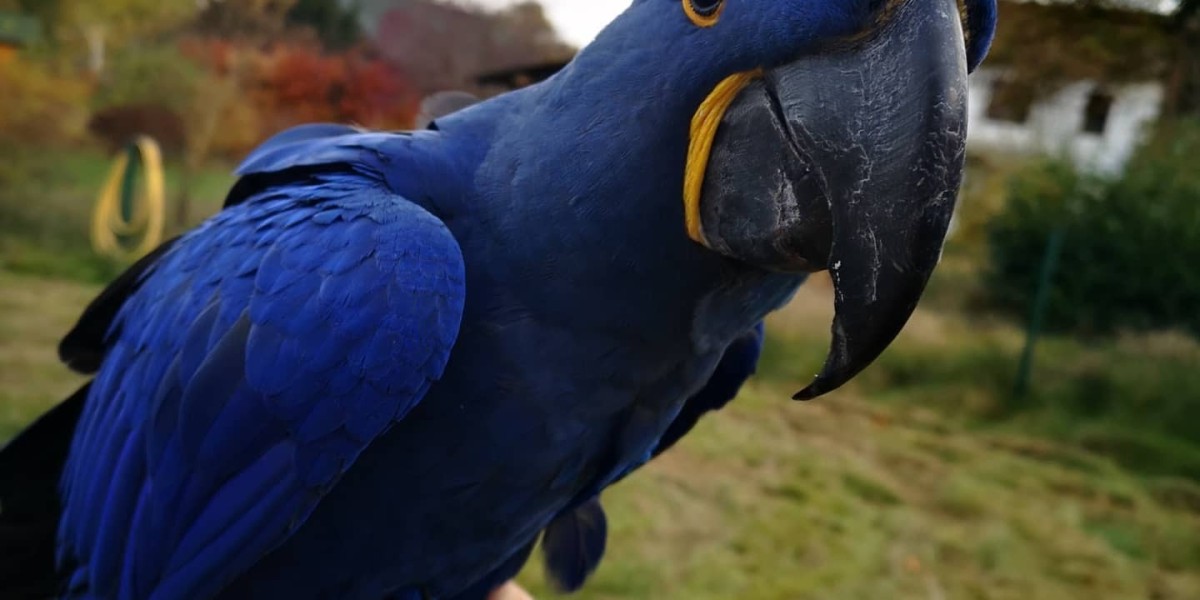 Information Regarding the Great Green Macaw
Information Regarding the Great Green MacawDespite their vibrant beauty, great green macaws are under threat. They are one of the most endangered species in aviculture and their habitat is threatened by deforestation.
MRN is working to preserve their natural habitat and to create corridors between protected areas. MRN works with local communities in order to inform them about the value of these species.
Habitat
The great green macaw, despite being among the most beautiful and intelligent birds on the planet has faced numerous threats in the last few decades. In fact, the species is classified as critically endangered by BirdLife International. The birds' numbers and range have been greatly reduced due to habitat loss, unsustainable logging and conversion to agriculture. Farmers also frequently shoot these beautiful birds as they are considered to be crop pests, and they also capture them to supply the pet trade.
In the wild the beautiful birds live in humid lowland forests and forest edges. They nest in tree cavities and feed on the mountain almond trees, Dipterix panamensis. They are renowned for their extremely social behavior, living in family groups in the absence of breeding.
Their wings and tail feathers are long and pointed to allow them to fly efficiently in the canopy of the forest. Their beaks, which can be large and powerful, permit them to crack open the tough shells of seeds, nuts, and bark. They also love eating roots, flowers and fruits. The great green macaw is a vocal bird and makes a variety calls to communicate with other members of their flock and with potential partners. Their calls are comprised of screeches whistles, and squawks.
These amazing birds serve an important role in their ecosystems as seed dispersers. The presence of this species in the wild contributes towards the health and diversity of rainforest habitats. They are an important component of the food chain, and are attracted by other animals like monkeys and insects that help spread seeds of trees and other plants.
Fortunately Non-profit organizations are working to protect the habitat of these magnificent birds. They purchase land to establish reserves, and collaborate with the local community to promote sustainable livelihoods. They are implementing conservation techniques to minimize human-macaw contact and offer opportunities for people to learn more about the beauty of this bird. Being able to see this majestic creature in its natural environment is truly a once-in-a-lifetime experience.
Diet
The great green Macaw is a stunning bird that lives in the rainforests of Central America and South America. They spend most of their time in small groups, high in the trees, eating seeds and nuts. Their strong beaks are used to break open the tough shells. They are, therefore, important seed dispersers, and they help maintain healthy forests. They also play a part in the ecosystem by providing food to other species that are endangered, such as the Scarlet Macaw and Yellow-naped Amazon.
This large parrot is predominantly green, with a splash of bright red on the cheeks, forehead and lower back. The tops of their heads are unadorned, and they have long beaks that have a sharp curvature. The curve is an adaptation that helps them break open the hard shells of seeds, nuts and other nuts.
In the wild they consume a variety of things like seeds, bark and roots, as well as flowers, bulbs and fruits. The fruit of the Almendra guayaquilensis mountain almond tree is a popular choice. They also go to clay licks, buy-macaw.com which are areas where birds can lick clay, believing it can provide beneficial health benefits for them.
The loss of habitat has made it impossible for them to survive in the wild. They are also taken for the illegal trade in pets.
The good news is that many organizations are working hard to protect this beautiful bird and make sure it has a safe home in the wild. World Land Trust, for example, supports reserves such as the Rio Canande Reserve in Ecuador where artificial macaw nests have been installed.
It is important for those who keep these birds as pets to allow them plenty of space and provide them with an aliment similar to the one they would eat in the wild. Fresh fruits and vegetables should be served, particularly those high in vitamins, such as sweet potatoes, carrots, and bananas. It is also a great idea to allow them to play, run and stretch their wings for 2-3 hours a day. This will keep them happy and healthy.
Nesting
The great green macaw nests in a tree cavity or crevice, typically in the almendro's trunk (Dipteryx panamensis) or tit o (Sacoglottis trichogyna). They will also use other trees, including beach almond (Dipteryx oleifera), caivo (Prioria copaifera) and caobilla (Carapa nicaraguensis). A pair of birds can lay as many as two eggs. The incubation time is about 28 days. The chicks leave the nest after they have fledged.
The most significant threat to the species is human-caused habitat loss, specifically through logging and agricultural. In Costa Rica, where the great green macaw is classified as endangered, there has been a significant decrease in the population due to deforestation, especially in the 1980s. Conservation efforts are underway to protect the species, however the task is massive.
Education is essential, along with habitat preservation. Outreach programs in schools and communities can help people realize the importance of the bird and motivate them to become involved in conservation efforts. Eco-tourism can be used to provide financial incentives to people who wish to protect the habitat of the magnificent green macaw.
Research shows that there aren't enough breeding pairs in the wild to sustain the population and grow in size. This is why it is so important to establish protected areas and reserve corridors where birds can find suitable partners. Conservation efforts include captive breeding and the creation of artificial nests that will reduce the risk of predation.
Poaching is a serious problem for the great green macaw, especially in Central America where the birds are frequently killed due to their attractive markings or considered agricultural pests and shot. ProBosque is a WLT-supported organisation in Ecuador is working with local communities to preserve the species in the Rio Canande Reserve as well as Cerro Blanco Wooden Reserve. The project is studying the impact of artificial nesting in this fragile region. The results of this study are expected to result in the development of new, better designs for nests that could reduce the chance of predation from a variety species of animals. Such innovations are a significant step in the direction to save this beautiful bird.
Breeding Season
The breeding season of the great green macaw runs between January and August with peaks in February and May. During this period the female will choose an area to nest in the canopy of the forest. This is typically an area of Dipteryx species. The female will lay between 2 and 3 eggs that are then incubated for a period of 26-28 days. The chicks are fed by both parents. A typical first-year survival rate is at least 65%.
Due to the heightened risks of predation as well as the unstable habitat, it is difficult for the great green macaw to maintain an unchanging population. To help combat this, conservationists have built artificial nests that are placed in secure, safe trees. These nests shield the young from predators and weather conditions. They also allow humans to observe the success and breeding of birds.
Great green macaws are usually seen in pairs, but they can be found in small groups of 10 to 15 individuals, too. They are found in the tropical lowland rainforest across the eastern part of Honduras to northwestern Colombia and western Ecuador. The birds live primarily in the forest canopy, but they also frequent foothill forests. They feed on seeds and fruits, and sometimes hard-shelled nut shells.
 Many non-profit organizations are working to preserve the natural habitat of this great green macaw. They collaborate with local communities, and also purchase land to promote sustainable farming and alternative income sources. They also monitor macaws to detect threats and to mitigate them.
Many non-profit organizations are working to preserve the natural habitat of this great green macaw. They collaborate with local communities, and also purchase land to promote sustainable farming and alternative income sources. They also monitor macaws to detect threats and to mitigate them.Many tourists consider it a thrilling experience to see the great green Macaw in its natural habitat. Birdwatching is offered by numerous eco-lodges, tour operators and eco-lodges. Tourists are given the chance to view the beautiful species of birds while learning about their habitats.
With the possibility of habitat loss caused by logging and mining, the population of the great green macaw is decreasing. Conservationists are making an impact, however, by establishing protected areas and ensuring that the macaw is able to travel between them. They are also creating breeding programs and encouraging community involvement to protect the macaw and other species.







